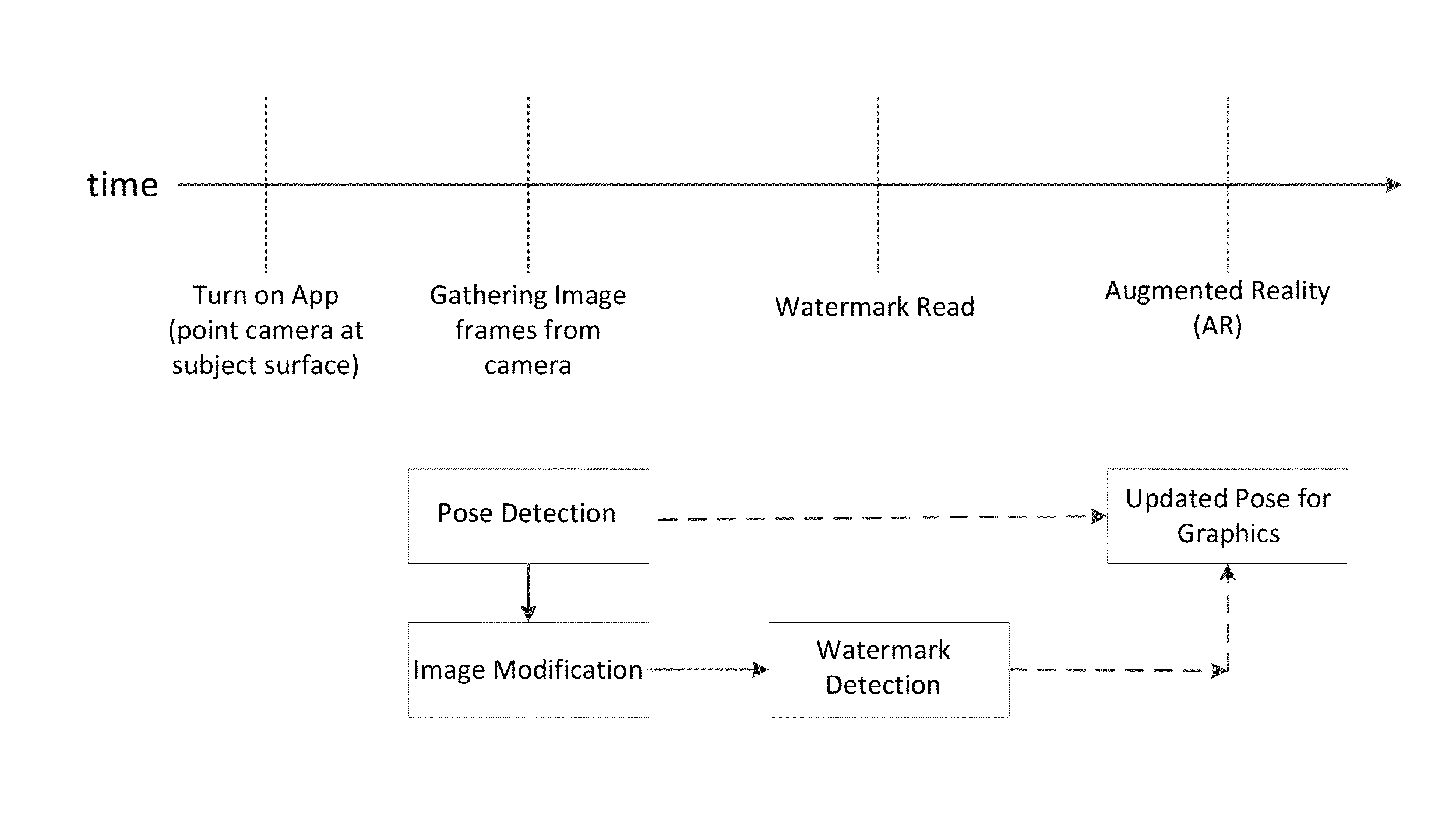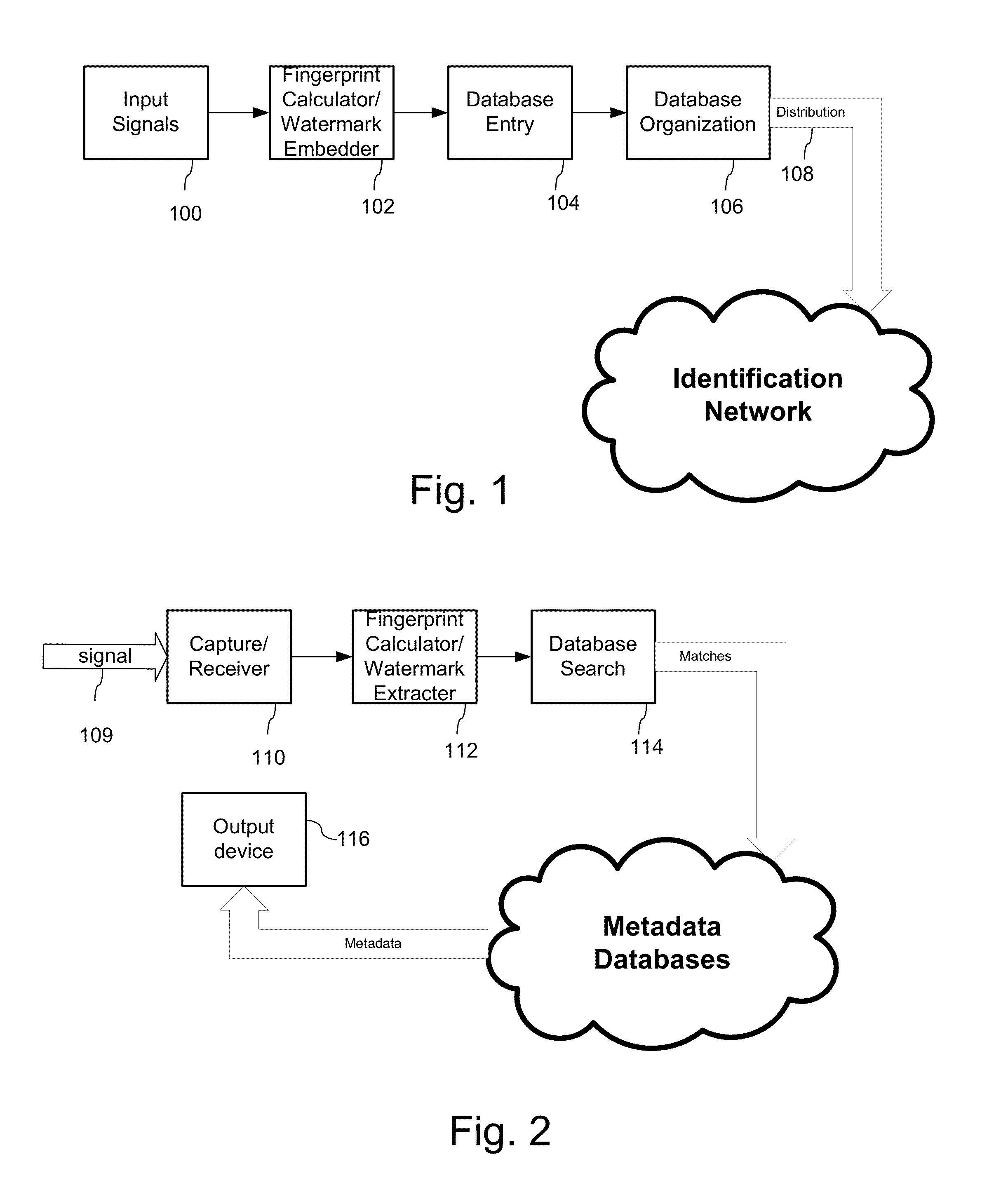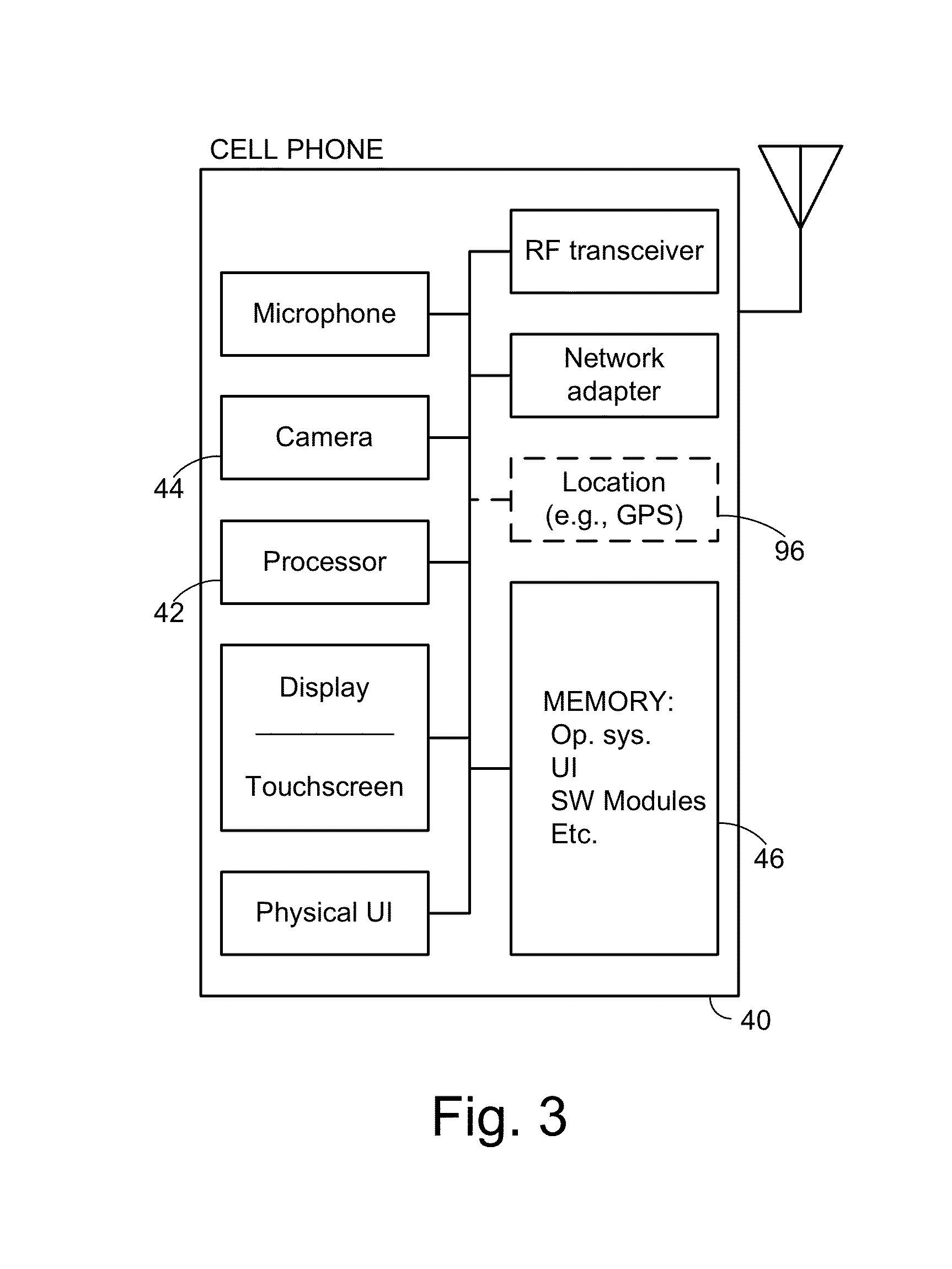Determining pose for use with digital watermarking, fingerprinting and augmented reality
- Summary
- Abstract
- Description
- Claims
- Application Information
AI Technical Summary
Benefits of technology
Problems solved by technology
Method used
Image
Examples
Embodiment Construction
[0033]The process of digital watermark insertion includes generating a watermark signal, and then using that signal to modulate characteristics of the image in the human-sensor gap. As described above, this process is preferably conducted at the RIP stage to enable control over the image representation used to control application of ink to a print media.
[0034]In prior work, several methods for generating the watermark signal, and for detecting the watermark signal in images captured of printed objects, are detailed. Please see U.S. Pat. Nos. 6,614,914 and 6,590,996, which are incorporated by reference. Therefore, for this discussion, the focus is on techniques used within the RIP to insert the watermark signal.
[0035]In one implementation, the watermark signal is generated as an array of watermark signal elements. These elements are mapped to spatial locations within an image block, called a tile. This tile is then replicated (e.g., tiled in a regular, contiguous array of blocks in t...
PUM
 Login to View More
Login to View More Abstract
Description
Claims
Application Information
 Login to View More
Login to View More - R&D
- Intellectual Property
- Life Sciences
- Materials
- Tech Scout
- Unparalleled Data Quality
- Higher Quality Content
- 60% Fewer Hallucinations
Browse by: Latest US Patents, China's latest patents, Technical Efficacy Thesaurus, Application Domain, Technology Topic, Popular Technical Reports.
© 2025 PatSnap. All rights reserved.Legal|Privacy policy|Modern Slavery Act Transparency Statement|Sitemap|About US| Contact US: help@patsnap.com



